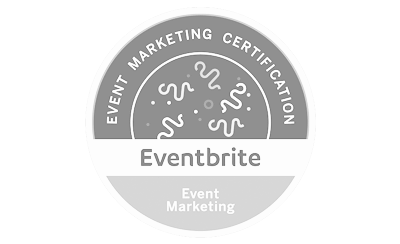
Every law firm has clients, and every law firm gets its clients from somewhere. The clients can arrive either as leads or as already signed clients. Either way, formal processes and procedures should be set in place for the handling of inbound leads and clients so that no potential business falls through the cracks. Regardless of whether or not you take the case, intake plays a large part in how your firm represents itself publicly, and each potential client must be treated with the best possible customer service.
Intake is the easiest and least expensive way to increase your law firm’s revenue. Improving your intake process will yield measurable business results for your firm. While ideally a firm’s number of qualified leads should be consistently increasing every month, the number of cases the firm accepts should also be increasing. If both metrics are not increasing, nine times out of ten, this failure can be tied to marketing and/or the lack of a formalized client intake process.
NEW CASE INTAKE: LEAD GENERATION
In order for a lead to arrive at your law firm, it must first be generated. In today’s modern times, clients don’t just walk in the door when they see a sign for a lawyer anymore. We have to be proactive to obtain customers for our businesses, not just reactive to the ones that fall in our laps.
So many factors dictate what each firm can and/or will be able to do to get business. A law firm’s size, geographic boundaries, practice areas, financial situation, and more will all impact how it develops and retains business. However, there are several channels through which almost all law firms will receive leads.
Common Lead Sources
- Your clients
- Referral attorneys
- Non-lawyer referral sources
- Digital marketing
- Traditional marketing (print advertising)
- Media coverage
NEW CASE INTAKE: LEAD SUBMISSION
Your law firm will spend money and/or have a reputation for excellence that drives new business in via referral. But how exactly does each client find their way to you? Does your referral source email you both on a group email, introducing you to the potential client? Does a call center screen leads that phone in after watching your television commercial? Does an inbound digital lead arrive to a set email distribution list of personnel at your law firm? To develop effective processes and procedures for client intake, you have to understand how potential leads arrive at your law firm.
How do leads arrive in your office?
- Form submission
- Phone call direct to office
- Phone call to call center/answering service
- Referral
NEW CASE INTAKE: LEAD PROCESSING
Once the lead arrives either via voice or via email, what happens next? The lead processing portion of new case intake is the most involved and complex. This is the point in the intake process where the standardized utilization of appropriate legal software will differentiate between the mildly successful law firms and the rainmakers. The number one reason to conduct intake through case management software is to collect data for the purposes of reporting.
If your law firm does not track its data in an organized digital format, the ability to produce accurate reporting at all is largely debatable. The law firm owners will want and need to know at a minimum, how long leads remain in their system before they are converted into clients, who their best referral sources are, if their marketing expenditures are worthwhile, which employees convert the most leads, and any lapses or holes in the process in real time.
There are four main components involved in processing potential new clients (PNCs):
- Lead Entry – Once a PNC is in contact with a law firm, that PNC’s data must be collected somewhere. Ideally, the firm will have an intake database or will use its case management software or CRM software for this purpose. If your law firm’s lead entry is taking place in handwritten notes, typed up emails, or a manual spreadsheet, you are setting your business up for serious potential problems. At this point in the intake process, it is appropriate to run a conflict check (if you’re already using your law firm database, this will only take a minute at most). Once you confirm that the PNC does not represent a conflict for your law firm, the screening process can begin.
- Lead Screening – Once you have entered your PNC’s initial information into your database, you will begin to screen the lead to determine if it is qualified. Any employee of your law firm that might be speaking to a potential new client should have the intake scripts readily available to them. Ideally, the scripts and prompts would be coded into your database; but, if not, a typed list of questions for each practice area or project should be kept close by. To determine which questions elicit the best and most helpful responses, your staff can A/B test multiple intake scripts and track the corresponding metrics. While you are screening your leads is also the time that you should be selling your law firm. When you are competing with other law firms for the same client, selling your differentiating factors will help to distinguish you from the herd. Some good examples of law firm selling points of differentiation include: we have a dedicated team of 10 employees working only on your type of case; all of the lawyers that will work on your case are partners or shareholders; and, we have successfully handled over 100 cases like yours before.
- Lead Nurturing – If your law firm does not employ real-time online contract execution during the lead screening process, you will need to set up a procedure for lead nurturing. A standard lead nurturing process will include phone calls, emails, and regular mail in a sequence designed to convert the lead into a client. Be sure to back up what you tell the PNC with the corresponding action – if you say that you will email them signup paperwork or a digital brochure about your law firm, do it.
- Lead Conversion – Contrary to what most of your marketing vendors will tell you, a conversion is not when someone submits a contact form on your website or calls your law office. Yes, that is a conversion to a marketer, but a conversion to a lawyer occurs when that inbound lead becomes a qualified, signed client that has the potential to generate revenue for the business. In order to turn the “marketing conversion” or lead into a client or a true conversion, a law firm should employ as many conversion methods as possible. Furthermore, the most effective conversion method will potentially vary by the project and the client. Some successful conversion methods include: signing up a client at their home, online contract execution, sending paperwork via email, and using the mail.
MAKE MORE MONEY OFF OF WHAT YOUR LAW FIRM ALREADY SPENDS
Your law firm likely spends time and/or money on its marketing and business development efforts, but if you don’t have a streamlined process for your law firm’s intake then you are not spending your time and money wisely. Streamlining you law firm’s intake process can help you sign up more clients without increasing your marketing expenditures, almost immediately increasing your law firm’s profitability. If your firm utilizes its database methodically, the changes you make to your new client screening procedures will bring about better leads and better conversions.














Leave a Comment